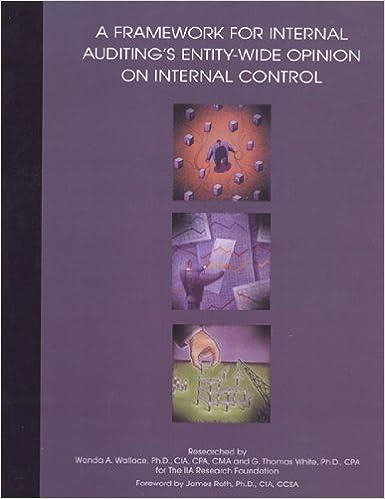Question
Advance Fuel Corporation (AFC) was founded five years ago when Dr. Zachery Aplin left his faculty position at a prestigious university to pursue the development
Advance Fuel Corporation (AFC) was founded five years ago when Dr. Zachery Aplin left his faculty position at a prestigious university to pursue the development of a process t convert grain waste poducts into fuel. He used a largegovernment grant, personal funds, and loans from friends and relatives as seed money to finance the company, and he was the sole stockholder.
Dr. Aplin worked feverishly for three years with limited success. However, in the beginning of the fourth year of dedicated research, he and his two-member staff made a major break-through that led to the development of a process capable of efficiently converting grain waste producys into ethanol, a compound that is blended with gasoline to produce a better burning automobile fuel. Ethanol-gasoline blends have been around for som time, andthe U.S. currently produces over a billion gallons of ethanol a year. However, the ethanol is produced from feed corn, and it more expensive than the gasoline to which it is added. Only a federal subsidy makes ethanol-gasoline mixture economically feasible. Producing ethanol from grain waste products would lower its cost, hence dramaticaly increasing the market potential of the blended fuel.
AFC recently received a patent from the U.S. Patent Office for Dr. Aplin's unique ethanol production process. After considering licensing the process to major oil companies, Dr. Aplin decided that AFC would broaden its scope of operations to include the production and sale of ethanol. Realizing that both his personal financial resources and those of AFC has ben exhausted, Dr. Aplin discussed his need for venture capital with the firm's CPA and banker. Both professionals suggested that the first step in attaining outside capital is the development of a busines plan.
With some help from the firm's CPA and banker, Dr. Aplin andhis staff developed an impeccable business plan. Merely working on the plan was a beneficial process, because it forced the participants to think about issues that had not previously been considered. Dr. Aplin knew that AFC's production process held a cost advantage over the competition, but he was amazed to discover that AFC's production costs were only 70 percent of its closest competitior. On theother hand, the capital-intensive nature of AFC's production process was revealed by the business plan.
The cost of building one production facility was determind to be $10 million. Since the manufacturing strategy calls for building plants in five major cities in the U.S., and since $1 million in woking capital is needed to start up each plant, AFC's total capital requirement is $55 million. Because the nee for $55 million was a lot more than Dr. Aplin anticipated, he decided to hire venture capital consultant to help him identify and approach potential capital providers. The consultant described four main sources of start-up capital: venture capital funds, banks, individual, and public offerings.
Asume you are a manager of a venture capital fund, and a bank is offering to laon $20 million of the $55 million financing requirement. The after-tax cash outflows to service the bank debt are $5, $5, $5, $5, and $10 million in Years 1 through 5, respectively. You are considering providing an equity investment for the remaining $35 million required by AFC.
Question
You have decided to use the discounted cash flow approach to value AFC. Based on the riskiness of the new business you believe a 30 percent discount rate is appopriate. What is the forecasted value of the AFC to its equity holders? (Hint: Use the cash flow in Table 2 as a starting point.)
| table 2 | |||||
| project cash flow statement (in millions) | |||||
| year 1 | year 2 | year 3 | year 4 | year 5 | |
| sales | 20 | 53 | 102 | 117 | 129 |
| cost of goods sold | 10 | 26 | 51 | 59 | 65 |
| gross margin | 10 | 27 | 51 | 58 | 64 |
| general / adminstratioon expenses | 5 | 10 | 19 | 23 | 25 |
| debt service requirements | 5 | 5 | 5 | 5 | 10 |
| pre-tax earnings | 0 | 12 | 27 | 30 | 29 |
| taxes | 0 | 5 | 12 | 13 | 14 |
| net income | 0 | 7 | 15 | 17 | 15 |
| depreciation/amoritization | 2 | 6 | 6 | 6 | 6 |
| terminal value | 116 | ||||
| net cash flow | 2 | 13 | 21 | 23 | 137 |
Notes: (a) Depreciation/amorization expenses is included in th cost of goods sold, yet it is a noncash charge. Thus, it must be added back to new income to obtain net cash flow in each year.
(b) Th terminal value is the present value, as of the end ofYear 5, of the equity cash flow that are expected to occur after Year 5. This value was obtained by assuming 10 percent annual growth in equity cash flow after Year 5 and a cost of equity of 30 percent:
Terminal value = $21(1.10) / ( 0.30 - 0.10) = $116.
Question
What percentage of common stock would you require to invest the needed $35 million? Would Dr. Aplin be willing to sell you this percentage ownership of AFC?
Step by Step Solution
There are 3 Steps involved in it
Step: 1

Get Instant Access to Expert-Tailored Solutions
See step-by-step solutions with expert insights and AI powered tools for academic success
Step: 2

Step: 3

Ace Your Homework with AI
Get the answers you need in no time with our AI-driven, step-by-step assistance
Get Started


